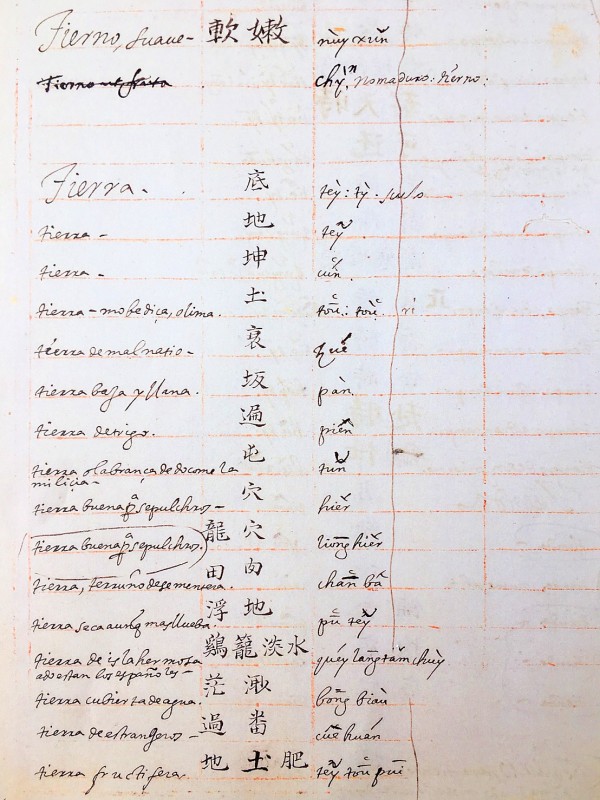《TAIPEI TIMES 焦點》 Hoklo lexicon found in Manila

Part of a text named The Vocabulary of the Language of Changchou, a 1,000-page lexicon dating to the time of the Spanish occupation of Taiwan in 1620. Photo: Yang Chin-chieh, Taipei Times
OLD SOUTHBOUND POLICY: Researchers say the 16th-century text will explain some Hoklo terms and elucidate differences in Hoklo spoken across Southeast Asia
By Yang Mien-chieh and William Hetherington / Staff reporter, with staff writer
A research team composed of Taiwanese and Spanish researchers yesterday discovered a lexicon that provides important clues about the development of Hoklo (commonly known as Taiwanese) in Taiwan during the 17th century.
The researchers said the 1,000-page lexicon titled The Vocabulary of the Language of Changchou (漳州話詞彙) contains 20,000 entries of words in use at the time of the Spanish occupation of Taiwan in 1620.
Researchers discovered the text while conducting research at the University of San Tomas in Manila.
Academia Sinica assistant researcher Chen Tsung-jen (陳宗仁) said the government’s “new southbound policy” is not a new idea, citing the travels of Hoklo speakers from southern Fujian Province to what is now the Philippines and Indonesia more than 400 years ago.
Chen said the text gives insight into what those Hoklo speakers encountered on their travels, adding that the text also provides evidence that the development of Hoklo stabilized at around that period in history, as it contains many expressions that are still in use.
“Hoklo has more than 1,000 years of history, having been in use since just after the Song dynasties. It is a shame to call it simply a ‘dialect.’ It has speakers in the Philippines, China, Malaysia and Singapore, and provides an important link with Southeast Asia,” Chen said.
National Tsing Hua University Department of History associate professor Lee Yu-chung (李毓中) said the text could also explain commonly misunderstood Hoklo terms.
The definitions are written using a combination of romanized Hoklo, romanized Mandarin, Chinese characters and Spanish, Lee said, adding that one-third of the definitions include annotations written using the official local language of the time.
“These annotations will really help with understanding the overall content,” Lee said.
Some expressions found in the text such as “washing one’s front door’s lintel” (se bun hong, 洗門風), meaning to publicly shame oneself out of regret over damaging another person’s honor, and the Hoklo term for “tears” (bak sai, 目虱) are still in use today, while other expressions found in the text are defined slightly differently from modern usage, Chen said.
The text also provides evidence about Spanish perceptions of the island, citing references to Keelung and Tamsui as “Spanish territory on Isla Hermosa,” he added.
“In the future when films are made about The Kingdom of Tungning, we will know how to portray certain behaviors and how to write dialogue for those cursing at others,” Chen said, adding that it also helps with understanding differences in Hoklo between Taiwan and Southeast Asia.
The team, which includes researchers from Academia Sinica, National Tsing Hua University, Spain’s University of Seville and Pompeu Fabra University in Barcelona, said the text represents the most comprehensive material discovered so far on 16th and 17th-century Hoklo vocabulary.
新聞來源:TAIPEI TIMES




















